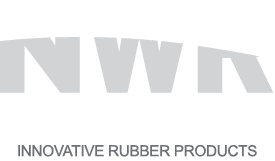Vs.
Polyurethane Flooring
- While the same type of recycled rubber crumb is used in both vulcanized and urethane bound products, a vulcanized mat is more durable because the strength of the bond between crumb rubber particles in the vulcanized mat is stronger than in the Urethane mat. The vulcanized mat also has a higher density and is non-porous.
- A vulcanized mat does not absorb moisture from melting ice or drinking bottles, liquids from cleaning processes, perspiration, and other sources. Liquids remain on the top surface for easy removal and maintenance regimens.
- The non-porous nature of the finished material keeps the surface cleaner and much more effective in reducing the instances of bacteria growth and infections such as MRSA.
- A vulcanized mat has a much smoother finish texture making it much easier to maintain and clean, and provides a nicer finished appearance.
- Long lasting
- Durable
- Easy Care
- Cleanliness
- Both roll and tile formats
- Inexpensive
- Wider range of thickness
- Mats or tiles only
- Rubber odor
- Higher cost
- Less durable, wear out faster
- Harder to clean and maintain
- Can harbor bacteria more easily
- Must have sealer applied to close pores
Vulcanization is a process for converting raw rubber into more durable materials by forming cross-links (bridges) between individual polymer chains under heat and pressure.
Polyurethane Manufacturing Method















